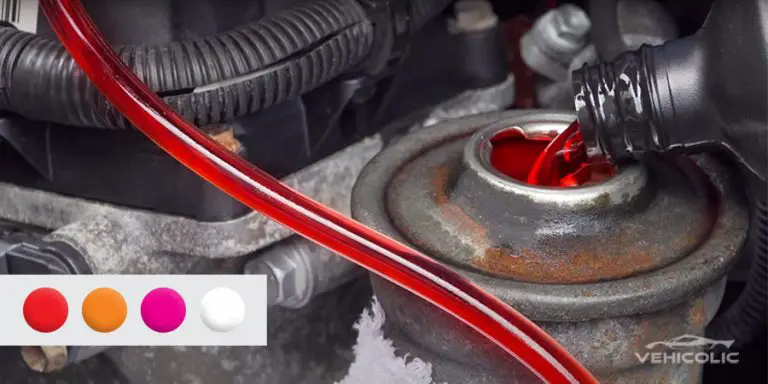How to Reset Transmission Control Module Chevy
The transmission control plays a vital role in helping you calculate the precise time and place to shift your gears.
Essentially, it ensures you have a good driving experience.
The functioning is rather complex and involves a series of sensors and codes sent to the vehicle’s main dashboard computer when there is a transmission failure.
Essentially, the transmission plays an active role in keeping the vehicle running. It’s at the center of the transfer of power from the vehicle engine to the wheels.
Your vehicle’s transmission control module can be found on the rear side of the engine depending on Chevy’s model and make.
So what is a Transmission Control Module?
This is an electronic control unit that controls the electronic automatic transmission. Sometimes it’s referred to as the gearbox control unit.
It helps boost shift quality, vehicle performance, and fuel economy.
Modern vehicles come with a transmission control unit that processes data from the engine control unit and sends signals to the computer dashboard via sensors.
TCM uses the information it receives from the engine to make decisions relating to changing speed and shifting of gears.
It processes electrical signals and sends the information using sensors to ensure the entire transmission system is working dependably and efficiently.
Any adjustments it makes are based on the information received from all sensors which guide smooth shifting.
Correct processing of the information is responsible for fuel efficiency and better driving experience including a reduction in engine emissions.
Manual Transmission vs. Automatic Transmission
Manual transmission vehicles operate differently than automatic transmissions. The difference is mainly in gear changes and timing, which are completely absent in manual transmissions.
For instance, manual transmission vehicles expect drivers to shift gears by hand on a need basis.
Therefore, it doesn’t have a control module and doesn’t need that detection power like in automatic transmissions.
What vital role does the transmission control module play?
As much as the TCM is in charge of controlling the vehicle’s transmission and constantly communicates with your vehicle’s main computer, it is the crucial link between the vehicle transmission system and your engine.
This vital link is very important to a smooth driving experience and without it, the automatic transmission system will be unable to shift gears when most needed.
For instance, before the vehicle initiates a downshift, the transmission fluid temperature sensor first sends a signal to ascertain that the transmission fluid temperature is optimal.
A downshift is only initiated by acting on that information when necessary.
The sensor for brake position sends information to the TCM indicating whether a brake has been applied and the throttle position sensor calculates the shifting timing.
Timely gear shifts are vital to a quality driving experience and the vehicle’s drivability.
TCM has a significant impact on the overall gas mileage and in preventing any mechanical issues that could arise by driving in the wrong gear.
TCM design is geared towards improving the quality of gear shifts on an automatic transmission vehicle. This means you experience smoother shifts when TCM is working properly.
Most importantly, there will be no excessive wear or tear in the transmission gears. The entire vehicle transmission system lasts longer and remains in good shape.
The ability of TCM to communicate with the main vehicle computer helps a lot in identifying any underlying problems in your vehicle transmission system early on.
What are the signs of transmission control module problems?
Knowing the signs helps you take swift action to avoid compromising the entire vehicle transmission system.
Just like any vehicle part, the TCM is prone to failure. However, being able to notice the problems early helps prevent more complications that can compromise crucial parts of your vehicle.
Fortunately, these failures are easy to notice. The common signs are:
- The vehicle fails to shift gears
- The transmission system doesn’t up-shift when you are accelerating
- The vehicle can’t shift gears from a neutral mode
- Experience erratic shifting of gears from one to the other or gear slippage
- Vehicle stalls or accelerates slowly when going uphill
- Vehicle fuel consumption increases because of driving in a wrong gear
- Vehicle fails to down-shift properly when making a stop
The above problems are indicators of an issue with the transmission components. Therefore, you seek prompt attention from a qualified mechanic to do a thorough inspection and repairs.
Can a person drive with a transmission control module problem?
Bearing in mind the role of a transmission system plays in the driving experience, it’s not advisable.
A transmission problem. Problems you will likely experience involve failure to shift gears meaning you could be initiating a gear and it moves to the wrong gear.
This is a dangerous scenario that poses a safety risk for the driver and other road users. The best remedy is to let a professional mechanic examine the problem and make repairs before you cause an accident.
How to reset the transmission control module for Chevy
The transmission control module is programmable, which means you can reset it. Resetting the TCM determines plenty of things such as your Chevy speed and gear shifting.
The process is easy and doesn’t need any tools. Besides, it resolves problems like sluggish gear shifting.
Step 1: Turn the key position
Turn your key position and let it settle on 2 then check the dashboard light. Ensure you have visible dashboard lights before proceeding to the next step.
Don’t push your accelerator or start the car. Be alert for any sounds. Expect two-click sounds then expect the dashboard lights to turn on. Remember, the engine should still be off.
Step 2: Step on the gas pedal
Press your gas pedal. You may need to push the accelerator pedal first to the floor as it will help activate that kick-down switch.
Go ahead and press the gas pedal and maintain the force on it downwards until the kick-down switch is activated fully.
The process takes roughly 15 seconds, so wait until it finishes for the resetting process to start working.
Step 3: Turn your key off
After pushing down that accelerator pedal for 15 seconds, go ahead and move the key without releasing the pressure off the pedal. Your feet should remain on the pedal.
In step 1 earlier you turn the key to 2, now restore it to the previous position which is the same as turning it off or to zero.
Don’t remove the key after turning it back. The key must remain in place. This is true for most Chevy models. However, in a Chevy model like the 2000 Silverado, the key is removed to avoid transmission problems.
Step 4: Release the gas pedal
Take the pressure off the gas pedal. Remember, your foot was to remain on the gas pedal previously even on the previous step. That pressure should only be removed after turning the key off.
Wait for about 2-3 minutes and don’t move the key. The wait time gives the Chevy engine rest time. Also, ensure the key is still in the off position.
Step 5: Get ready to drive
The process is almost complete.
Remember, you have finished the engine control unit (ECU) and transmission control unit programming or reset process, which is what was happening in the above steps. What is remaining is to drive.
In this last step, both TCM and ECU work together to learn how you drive. They monitor your driving pattern. Drive your Chevy for 20 minutes.
Don’t race, just drive normally at the decent speed you usually use. Select normal and smooth transmission to help you shift easily.
FAQs
1. Is it true that if I disconnect the battery it resets the TCM?
If you keenly read the resetting TCM stepwise guide above, you will understand that disconnecting the car battery doesn’t reset your TCM. As long as the engine has no problem and the battery terminals are working properly, the reset process will work effectively. TCM has nothing to do with the battery. A transmission control module is purely a programmable thing and it’s the only way to reset it. Sometimes a transmission scan tool is used.
2. Is it a must that I program the TCM?
Yes. It is a necessary process even after you install a new TCM. Programming the TCM ensures that it works properly on the vehicle. Otherwise, you will experience transmission problems that pose safety problems when driving.
3. What does a bad transmission control module really mean?
This is not a unique problem to the TCM only, the same can happen to any electronic device. This creates a failure that may be because of a bad solenoid valve or blocked passage.
Final thoughts
The above process is easy and necessary to give you a good driving experience. Besides, it takes at most 10 minutes to reset your TCM, and driving the Chevy is for only 20 minutes, which you can comfortably manage.
Try to understand the process to reset your Chevy TCM efficiently. If you experience more problems, kindly let us know.






